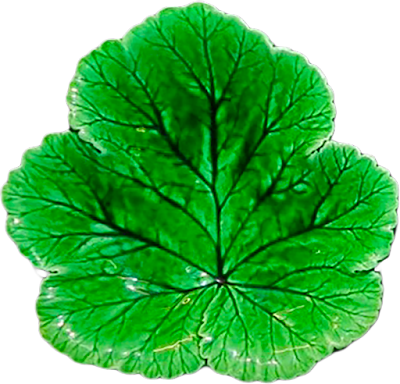Green glazed pottery has been a staple of households for 250 years. It is a classic English country look that is often paired with painted or natural country pine furniture by decorators.
Wedgwood has been the leader in the production of this green dinnerware from the start. Beginning from the time of the Wedgwood Whieldon partnership, green glazed earthenware has provided an elegant colorful background for the service of food. Once the manufacture of majolica began in earnest after 1851, potteries from Minton to the smallest independent pottery began the production of this ware. As a result, there is plenty of green majolica to pick from.
Minton majolica plate
James Reed green majolica plate.
Also made by Hope & Carter, Burselem
Pattern originated with Samuel Alcock but
was copied by many others
Hope & Carter, Burslem majolica green plate
Hope & Carter green majolica begonia plate
Adams & Bromley majolica pond lily plate.
Also made by Minton
Wedgwood majolica Leafage platter
Wedgwood majolica grape leaf plate
Wedgwood & Co. majolica plate
Wedgwood majolica sunflower plate
Wedgwood majolica green plate
Wedgwood majolica green plate
Wedgwood majolica green plate
Wedgwood majolica green plate
Wedgwood majolica green plate
Wedgwood majolica green foxglove plate
Wedgwood majolica green plate
Twentieth century Wedgwood grape plate
It was meant for everyday use and was inexpensive when it was new. It remains reasonably priced today with most pieces selling under $100.
For more on Wedgwood's green majolica go here.
This post has been updated since it was first posted











.jpg)




































No comments:
Post a Comment